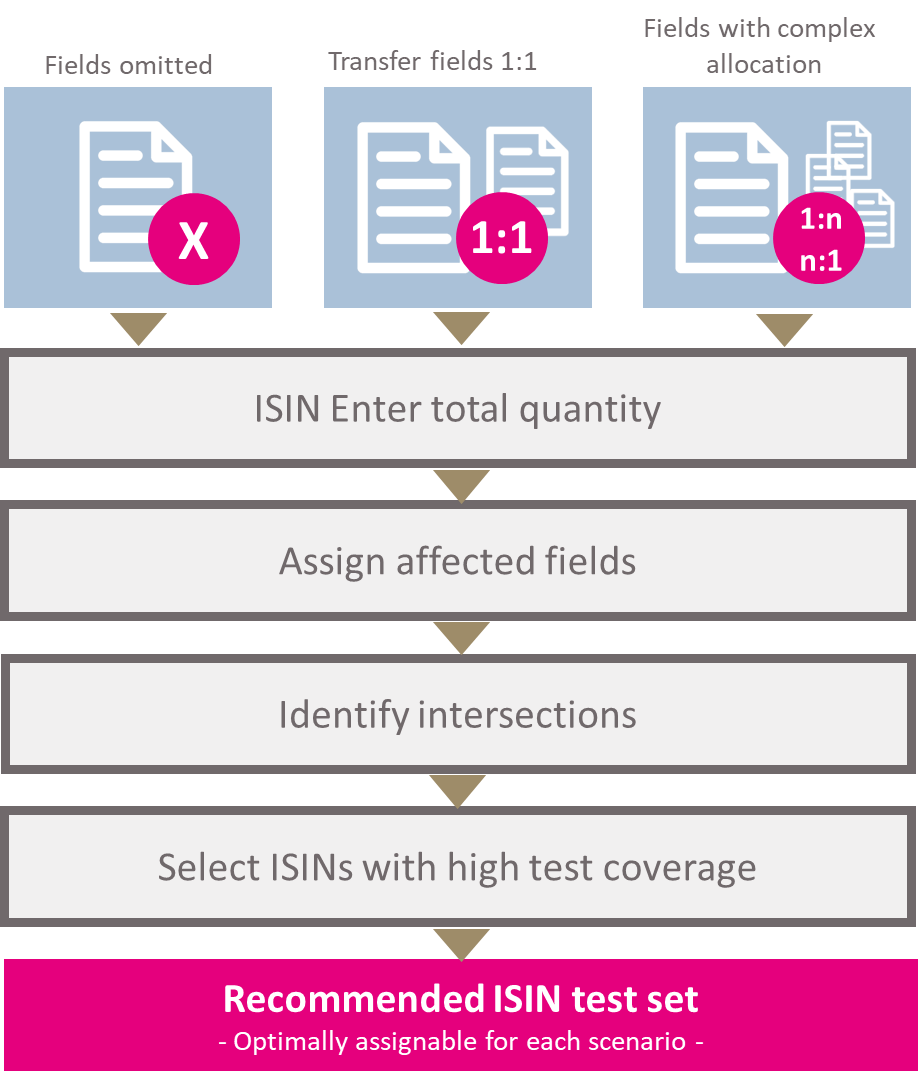As the Fontus project intensifies – involving the revision of master data delivery for securities at WM Datenservice – one thing is becoming clear: the success of the migration hinges on one factor that many institutions have not yet given sufficient consideration to – test management. While project teams have been set up and the first implementation steps planned, there is often no structured test strategy. Yet this is precisely the key to a stable transition to productive operation.
Complex data flows and individual usage patterns
The daily data delivery by WM Datenservice – partly via intermediate providers – affects dozens of connected target systems in large banks. Particularly critical is the fact that master data flows not only into the back office, but also into central control processes. A single D20 field can quickly affect 50 or more acceptance systems. In addition, each institution uses the delivered data differently. This results in highly individual test requirements.
Test overload due to broad D20 specification
A key risk is that the D20 documentation covers a very broad spectrum of data fields. Without a smart approach to testing, there is a risk of getting bogged down in an unmanageable number of test cases. This is particularly critical for fields with complex changes, such as mergers (n:1) or splits (1:n). These can lead to errors that only become apparent at a late stage.
The DPS approach: Standardised scenarios and targeted test ISINs
To counteract this, DPS relies on a proven approach: We use an internal asset repository with standardised test scenarios and ideally matched ISINs. The aim is to achieve the highest possible test coverage with as few test cases as possible – efficiently, comprehensibly and with clear prioritisation.
As part of a quick assessment (10–15 days), we work with the customer to clarify the relevant system and process areas and derive a prioritised set of test cases. This is based on a structured questionnaire. The result: a practical test scenario that can be realistically integrated into existing project plans.
How we identify optimal test ISINs for Fontus
Suitable test ISINs are selected based on the planned field changes in D20. We distinguish between three types of scenarios and the resulting concrete steps:

The result is a test set that enables efficient and effective verification of the new D20 structures.
Try it now Strategically positioned
Many banks have already launched their Fontus projects. However, only a well-thought-out test strategy ensures that changes are implemented in a controlled manner – without any surprises in live operation. With proven test scenarios, coordinated ISINs and our Quick Assessment, we support you in setting up your test tracks efficiently and effectively. After all, test management is not a marginal issue – it is the decisive factor for success in Fontus migration.
Read our articles Fontus: How banks are making effective use of the advanced D20 fields and Project Fontus: Banks need to maintain an overview, as well as our overview article Project Fontus: The future of master data delivery.











